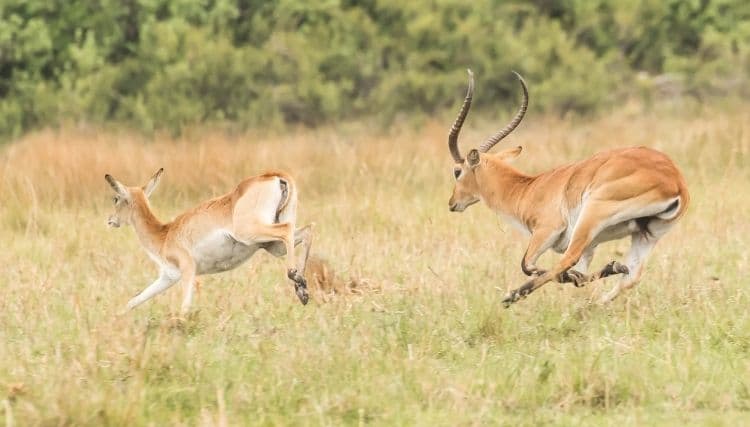
If you’ve ever wanted to know all there is to know about Southern Mountain Reedbuck Antelope, then this guide is for you.
What is Southern Mountain Reedbuck Antelope?
The Southern Mountain Reedbuck Antelope (scientific name: Redunca fulvorufula) is a species of antelope that is native to southern Africa. They are found in countries such as South Africa, Lesotho, Eswatini, Zimbabwe, and Mozambique.
Southern Mountain Reedbuck Antelopes typically stand about 60-90 cm (2-3 ft) tall at the shoulder and weigh between 35-50 kg (77-110 lbs). They have a reddish-brown coat with a white underbelly and a distinctively arched back. Both males and females have ridged horns that can grow up to 25-30 cm (10-12 inches) long in males and 12-15 cm (5-6 inches) in females.
Southern Mountain Reedbucks prefer open grassland and shrubland habitats and are most active during the early morning and late afternoon hours.
What is the Southern Mountain Reedbuck Antelope Habitat?

The Southern Mountain Reedbuck Antelope typically inhabits open grassland and shrubland habitats in southern Africa, at elevations ranging from sea level to about 3000 meters (9800 feet) above sea level.
They are commonly found in mountainous areas with steep slopes and rocky outcrops and in valleys and plateaus with grassy vegetation. They may also be found near rivers, streams, and wetlands where water and vegetation are abundant.
The Southern Mountain Reedbuck Antelope is well adapted to its habitat, as its arched back and long legs enable it to move quickly and nimbly across rocky terrain. They are also able to survive in areas with little water, as they can obtain moisture from the plants they consume.
However, their habitat is under threat due to human activities such as agriculture, urbanization, and overgrazing, which lead to habitat loss and fragmentation. This has resulted in declining populations of Southern Mountain Reedbuck Antelopes in some areas. Conservation efforts are underway to protect their habitat and ensure the survival of this species.
What is The Physical Description Of Southern Mountain Reedbuck Antelope?
The Southern Mountain Reedbuck Antelope is a medium-sized antelope with a distinctive appearance. Here are some of its physical characteristics:
- Size: Southern Mountain Reedbucks stand about 60-90 cm (2-3 ft) tall at the shoulder and weigh between 35-50 kg (77-110 lbs).
- Coat: They have a short, reddish-brown coat with a white underbelly. The coat is coarse and shaggy during the winter months but becomes shorter and smoother in summer.
- Back: The species has a distinctively arched back, with the rump higher than the shoulders.
- Head: The head is long and narrow, with a small pointed nose and large, round ears. The eyes are large and dark.
- Horns: Both males and females have ridged horns. In males, the horns can grow up to 25-30 cm (10-12 inches) long, while in females they are smaller, typically around 12-15 cm (5-6 inches) long.
- Legs: The legs are long and slender, with black hooves. The hind legs are longer than the front legs, giving the species a distinctive gait when they move.
- Tail: The tail is short and bushy, with a white underside.
Overall, the Southern Mountain Reedbuck Antelope has a sleek and agile appearance, well-adapted to its mountainous habitat.
Southern Mountain Reedbuck Antelope Reproduction -Breeding
The breeding season for Southern Mountain Reedbuck Antelopes typically takes place between February and May, although this can vary depending on the region and environmental conditions. During this time, males will compete for access to females and establish territories to defend their mating rights.
Males use a variety of displays and vocalizations to attract females, including low grunts, snorts, and whistles. They also engage in physical displays such as posturing, charging, and clashing horns with other males.
Once a female has chosen a mate, the pair will engage in courtship behaviors such as grooming, licking, and rubbing against each other. The gestation period for Southern Mountain Reedbuck Antelopes is around 7-8 months, after which a single calf is born.
Newborn calves can stand and walk within a few hours of birth and will remain hidden in vegetation for the first few weeks of their lives to avoid predators. The mother will return to nurse her calf several times a day and will defend it fiercely against predators.
Southern Mountain Reedbuck Antelopes reach sexual maturity at around 2 years of age, although some females may mature earlier. They have a lifespan of around 10-12 years in the wild.
Southern Mountain Reedbuck Antelope Communication And Perception
Southern Mountain Reedbuck Antelopes use a variety of visual, auditory, and olfactory signals to communicate with each other. Here are some examples:
- Visual signals: The species uses body posture, movement, and facial expressions to communicate. For example, males may arch their backs and raise their heads to signal aggression, while females may flick their ears or raise their tails to signal alarm.
- Auditory signals: Southern Mountain Reedbuck Antelopes use a range of vocalizations to communicate with each other. Males may emit low grunts, snorts, and whistles during the breeding season to attract females and establish territories. Females may use a high-pitched “hoo” call to locate their young.
- Olfactory signals: The species use scent marking to establish territory and communicate with other individuals. Males have scent glands on their forehead and legs and will rub their heads and legs on vegetation to leave their scent. Females also have scent glands and may use urine and feces to mark their territory.
Southern Mountain Reedbuck Antelopes have excellent senses of hearing and smell, which are important for detecting predators and communicating with each other.
They also have large, expressive eyes that provide them with good vision, particularly in low-light conditions. The species can recognize familiar individuals by their visual and olfactory cues and may form long-term social bonds with family members and mates.
What Does Southern Mountain Reedbuck Antelope Eat?
Southern Mountain Reedbuck Antelopes are herbivores, feeding mainly on grasses and other herbaceous plants. They have a specialized diet that includes a variety of tough, fibrous vegetation that is abundant in their mountainous habitat.
Some of the plants that Southern Mountain Reedbuck Antelopes commonly feed on include:
- Grasses: They feed on various types of grass, including Themeda triandra, Eragrostis curvula, and Panicum maximum.
- Herbs and shrubs: They also feed on a variety of herbs and shrubs, including Helichrysum spp., Buddleja saligna, and Protea spp.
- Succulents: In areas with less vegetation, they may feed on succulents such as Aloe spp. and Euphorbia spp.
Southern Mountain Reedbuck Antelopes have specialized teeth and digestive systems that allow them to efficiently break down and digest rigid plant material. They can extract nutrients from a variety of plants, which enables them to survive in areas with low plant diversity.
During times of drought or food scarcity, they may also feed on bark, leaves, and other parts of trees and shrubs. However, their diet is primarily composed of grasses and herbaceous plants.
What is Southern Mountain Reedbuck Antelope Role İn The Ecosystem?
Southern Mountain Reedbuck Antelopes play an important role in their ecosystem as herbivores. By feeding on grasses and other vegetation, they help to maintain the balance of plant communities in their habitat. They also serve as prey for a variety of predators, including lions, leopards, hyenas, and wild dogs.
As prey animals, Southern Mountain Reedbuck Antelopes are an important food source for many large carnivores. Their presence in the ecosystem helps to support the health and abundance of predator populations, which in turn helps to regulate the populations of their prey species.
Southern Mountain Reedbuck Antelopes also have an impact on the landscape through their feeding behavior. By grazing on vegetation, they help to maintain open spaces and prevent the encroachment of woody plants into grasslands. This can have a positive impact on other plant and animal species that rely on open habitats, such as birds and small mammals.
Overall, Southern Mountain Reedbuck Antelopes play an important ecological role as herbivores and prey animals, helping to maintain the balance and biodiversity of their mountainous habitat.
Southern Mountain Reedbuck Antelope Conservation Status
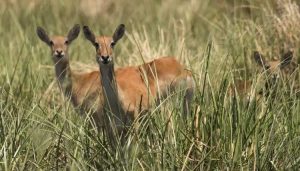
The Southern Mountain Reedbuck Antelope is currently listed as “Least Concern” on the IUCN Red List of Threatened Species. However, their populations have been declining in some parts of their range due to habitat loss and fragmentation, hunting, and competition with livestock for grazing resources.
In some areas, Southern Mountain Reedbuck Antelopes are hunted for their meat and hides, which has led to population declines in some regions. Habitat loss and fragmentation due to human activities such as agriculture, urbanization, and mining have also impacted their populations.
Conservation efforts for the species include the establishment of protected areas and the implementation of hunting regulations to control harvest rates. Some organizations are also working with local communities to promote sustainable land use practices that support the conservation of Southern Mountain Reedbuck Antelopes and their habitats.
Overall, continued monitoring and conservation efforts are needed to ensure the long-term survival of Southern Mountain Reedbuck Antelopes and their ecosystems.
How Many Southern Mountain Reedbuck Antelope Are Left İn The World?
There are only about 33,000 Southern Mountain Reedbuck Antelopes left in the world today.
How Fast a Southern Mountain Reedbuck Antelope Run?
Southern Mountain Reedbuck Antelopes are known for their speed and agility and can run up to speeds of approximately 50-60 km/h (31-37 mph) over short distances. They have long, slender legs and are adapted for running and jumping over rough, rocky terrain in their mountainous habitat.
Their speed and agility are important adaptations that help them to escape from predators such as lions, leopards, and hyenas, which are also found in their habitat. By running quickly and maneuvering through rocky terrain, Southern Mountain Reedbuck Antelopes can avoid capture and increase their chances of survival.
How High Can Southern Mountain Reedbuck Antelope Jump?
They are also known to jump up to six feet in the air and can reach a height of five feet.
İs Southern Mountain Reedbuck Antelope Aggressive?
The Southern Mountain Reedbuck Antelope is not known to be aggressive and usually remains hidden while grazing on the high plains.
Can Southern Mountain Reedbuck Antelope Swim?
While these animals can’t swim in the traditional sense (they don’t have flippers or webbed feet), they can swim by using their powerful legs to propel themselves through the water at a speed of about 10 miles per hour.
What Plants Do Southern Mountain Reedbuck Antelope Avoid?
In the Southern Mountain Reedbuck Antelope’s natural habitat, they avoid plants that are toxic to them. The plants that they avoid include:
-Datura
-Castor bean
-Nettle
-Andropogon gerardii (Gerard’s Blue Grass)
Where Do Southern Mountain Reedbuck Antelope Sleep?
They sleep in the dark, under dense bushes and trees.
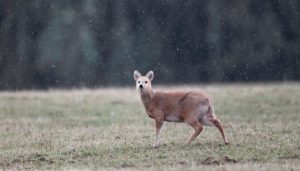
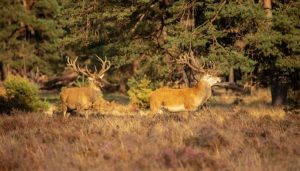
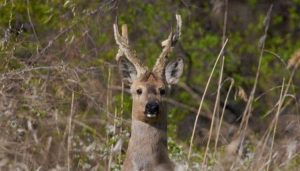
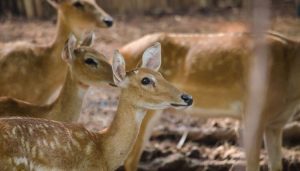
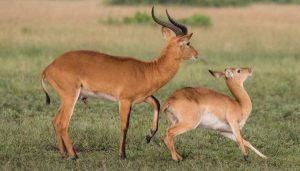
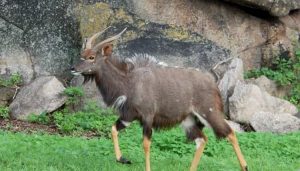
Leave a Reply